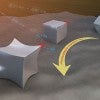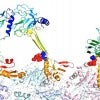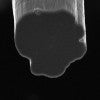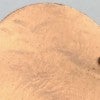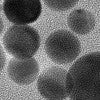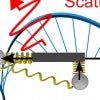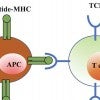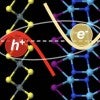There’s a reason bacteria stay in shape
October 6, 2020
A primal mechanism in bacteria that keeps them in their personal Goldilocks zones -- that is, just right -- appears to depend on two random means of regulation, growth and division, that cancel each other out. The same mechanism may give researchers a new perspective on disease, including cancer.
Shape matters for light-activated nanocatalysts
September 18, 2020
Points matter when designing nanoparticles that drive important chemical reactions using the power of light, according research from Rice University's Laboratory for Nanophotonics.
Cartwheeling light reveals new optical phenomenon
June 29, 2020
Researchers at Rice University have discovered details about a novel type of polarized light-matter interaction with light that literally turns end over end as it propagates from a source.
Purifying water with a partly coated gold nanoparticle
June 22, 2020
Rice's Naomi Halas has collaborated with Yale University engineers on the creation of a light-activated nanoparticle for clearing water of pollutants. The research is part of an effort by NEWT, the Rice-based Nanosystems Engineering Research Center for Nanotechnology-Enabled Water Treatment.
‘Relaxed’ T cells critical to immune response
June 16, 2020
Rice University researchers model the role of relaxation time as T cells bind to invaders or imposters, and how their ability to differentiate between the two triggers the body’s immune system.
Excitons form superfluid in certain 2D combos
June 15, 2020
Mixing and matching computational models of 2D materials led scientists at Rice University to the realization that excitons can be manipulated in new and useful ways.


